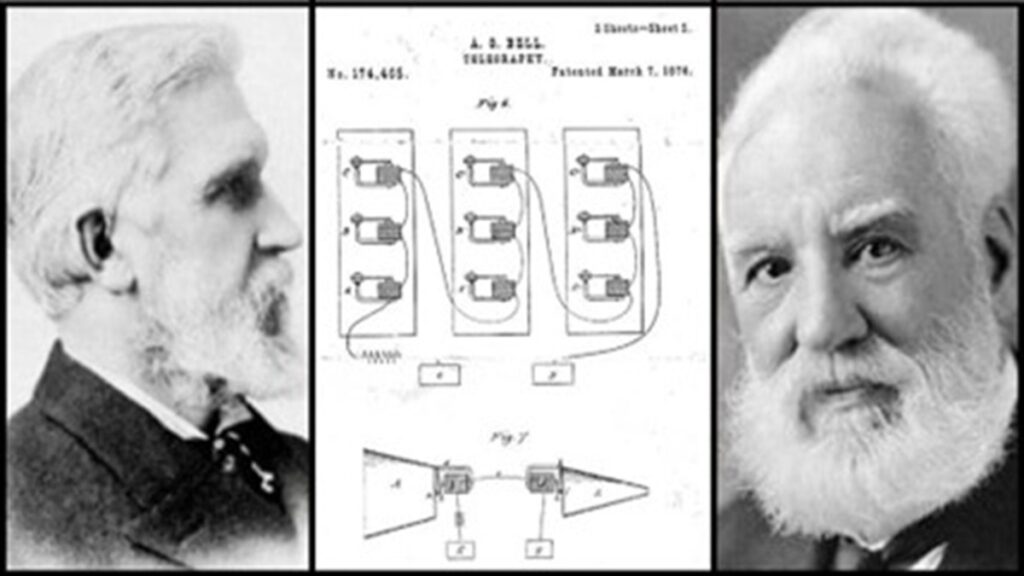When you think of phone wars, you probably bring to mind the court wrangling between smartphone developers including Apple and Samsung. However, a much older and more controversial battle occurred in the late 19th Century as two men fought to be acknowledged as the inventor of what is now known as the landline. The antagonists were Alexander Graham Bell and Elisha Gray, and this is the story.
14th February 1876: The day the controversy started
One of the interesting quirks of this case is that both Bell and Gray filed patent documents with the USPTO on the same day, which has lead to various conspiracy theories and accusations of theft.
Bell filed his patent application in the morning of 14th February, with the title “The method of, and apparatus for, transmitting vocal or other sounds telegraphically, as herein described, by causing electrical undulations, similar in form to the vibrations of the air accompanying the said vocal or other sounds, substantially as set forth”. Later the same day, Gray filed a “patent caveat” (a way, at the time, of preserving a priority date) – according to records, Bell’s application was the fifth to be filed that day, whilst Gray’s filing was the 39th.
Bell prevails – in court, and in the public’s opinion
Whoever got to the patent office first should not have mattered, as under the US law that was in force at the time (and up until 2011) a patent was granted to the first to invent and not to the first to file. However, the fact that Bell was the “first to file” on that day, as well as other factors that helped to sway the public’s – and ultimately, the court’s – opinion in Bell’s favour.
Something that certainly went in Bell’s favour was his story of calling his assistant using his telephone three days after his patent was filed. Bell recorded this call in his notebook as taking place on February 17, 1876. Another aspect that went in Bell’s favour was the fact that his device was known as the “Bell telephone”, and the invention therefore became inextricably linked to the Scottish inventor.
The US Supreme Court decided: “It appears from the proof in these causes that Alexander Graham Bell was the first discoverer of the art or process of transferring to, or impressing upon, a continuous current of electricity in a closed circuit, by gradually changing its intensity, the vibrations of air produced by the human voice in articulate speech, in a way to cause the speech to be carried to and received by a listener at a distance on the line of the current; and this discovery was patentable under the patent laws of the United States.”
Bell’s patent stands up in court – again and again
That wasn’t the end of the story, however. Over the following years, Bell’s patent was involved in over 600 court cases, taking up an entire volume of the Supreme Court’s caselaw. Despite all these challenges, it has never been proved that Bell had prior knowledge that Gray was going to file his caveat on 14th February 1876, or that he “took inspiration” from Gray’s innovation. The Supreme Court also found Bell’s patent to be valid, despite numerous inventors claiming prior rights to the technology – again helping to validate Bell’s ownership in the eyes of the public.
About Dawn Ellmore Employment
Dawn Ellmore Employment was incorporated in 1995 and is a market leader in intellectual property and legal recruitment.

